Vestige, a graphic score (2016)For my graphic series Tangencies, I cut the A3 paper format into a square. The remaining 29.7 x 12 cm strips offered themselves as a suitable format for the time-bound image structure of a graphic score. Having performed Cornelius Cardew's Treatise, with various formations, and more recently Roman Haubenstock Ramati's Decisions, with my students, I had already gained some experience of how the relationships of sound and image play out in this medium.A graphic score should first of all stimulate fruitful debate. It should radiate a certain 'authority', while at the same time providing free space for creative design; and it should, as far as possible, do without supplementary written instructions. The essence of graphics is the autonomy of dot and line. When I drew Vestige, I didn't have any particular sounds in mind; I did, however, have a specific idea of the musicking process that I wanted to initiate. A drawn line can be rough or delicate, elegant or awkward, swaying or cautious, direct or circuitous, energetic or tentative. The process of sonic transposition should be guided by these qualities; not in the sense of artificial expression, but of immediate resonance. In this recording from 2016 you will hear Ernesto Rodriguez (viola), Guilherme Rodriguez (cello), Nuno Torres (tenor sax.), Kornél Vajsz (electric sitar) and Nikolaus Gerszewski (percussion). Vestige, eine graphische Partitur (2016)Für meine Grafikserie Tangencies schnitt ich das A3-Papierformat quadratisch zu. Die verbleibenden 29,7 x 12 cm großen Streifen boten sich an als Format für die zeitgebundene Bildstruktur einer grafischen Partitur.Da ich in den vergangenen Jahren, mit verschiedenen Formationen, Cornelius Cardews Treatise, und erst kürzlich, mit meinen Studenten, Roman Haubenstock Ramatis Decisions, aufgeführt hatte, konnte ich auf einige Erfahrung zurückgreifen, wie sich die Beziehungen von Klang und Bild in diesem Medium gestalten. Eine grafische Partitur sollte zunächst einmal eine fruchtbare Debatte anregen. Sie sollte eine gewisse 'Authorität' ausstrahlen, und dabei gleichzeitig Freiräume zum kreativen Gestalten schaffen; und sie sollte möglichst ohne ergänzende schriftliche Instruktionen auskommen. Die Essenz der Grafik ist die Autonomie von Punkt und Linie. Beim Zeichnen von Vestige hatte ich keine bestimmten Klänge im Ohr; ich hatte jedoch eine bestimmte Vorstellung von dem Prozeß des Musizierens, den ich anstoßen wollte. Eine gezeichnete Linie kann grob oder zart, elegant oder unbeholfen, schwungvoll oder vorsichtig, direkt oder umschweifig, energisch oder zaghaft, anschmiegsam oder abweisend sein. Der Prozeß der klanglichen Umsetzung sollte sich an diesen Qualitäten orientieren; nicht im Sinne eines artifiziellen Ausdrucks, sondern einer unmittelbaren Resonanz. In vorliegenden Einspielung von 2016 hören Sie Ernesto Rodriguez (Viola), Guilherme Rodriguez (Cello), Nuno Torres (Tenor Sax.), Kornél Vajsz (Electric Sitar) und Nikolaus Gerszewski (Percussion). |
score sample
            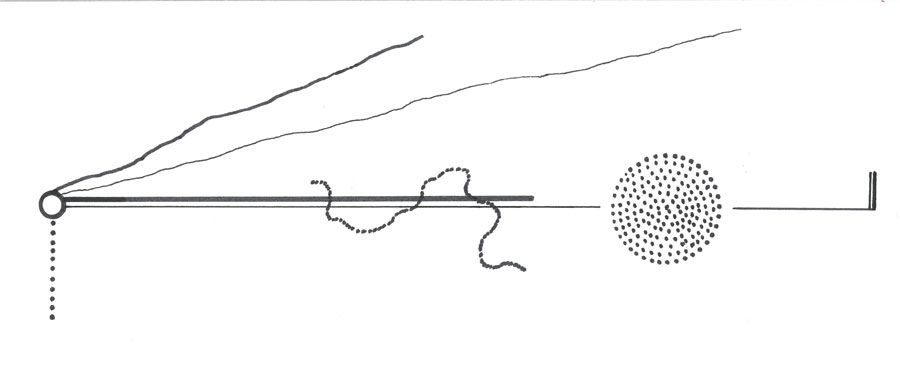 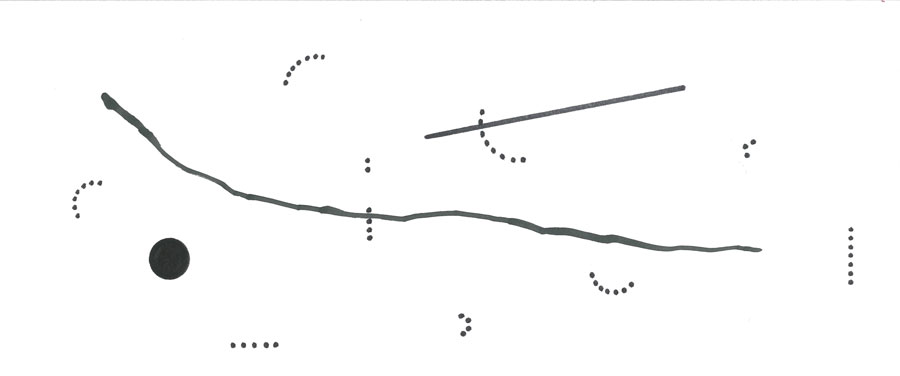 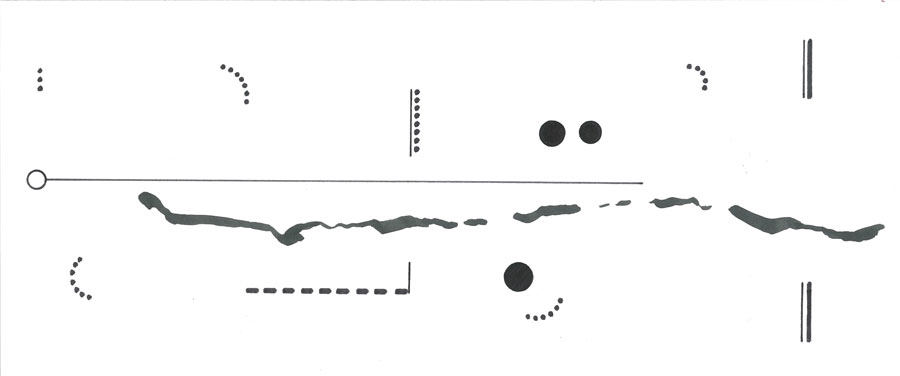 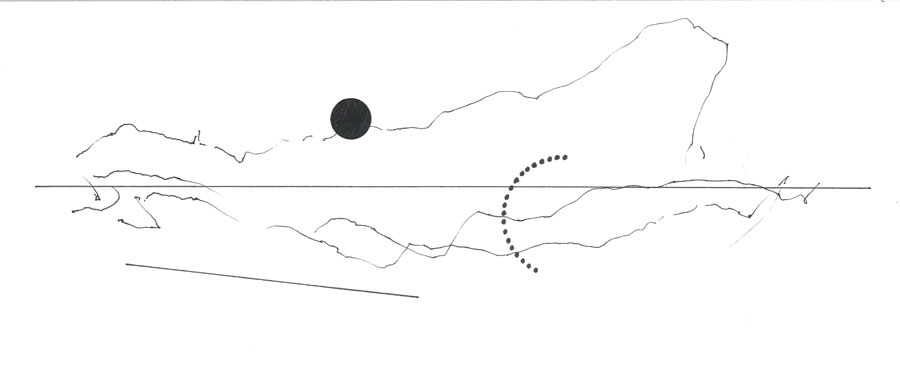 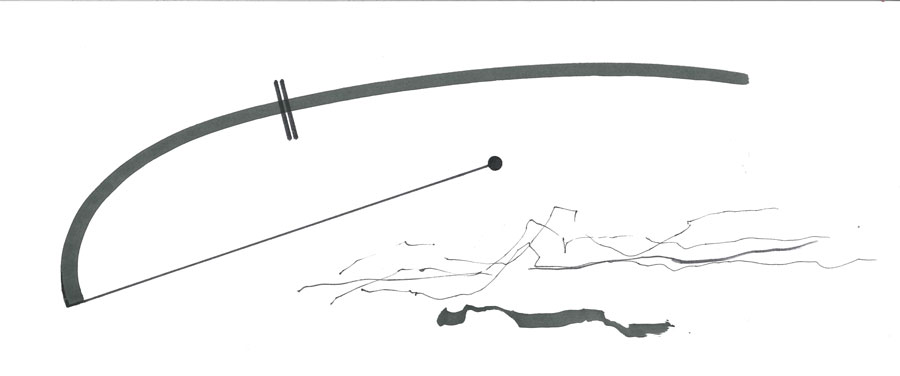 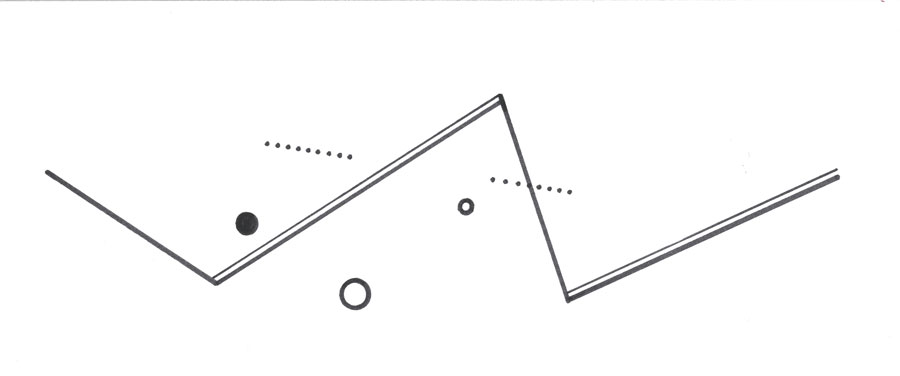 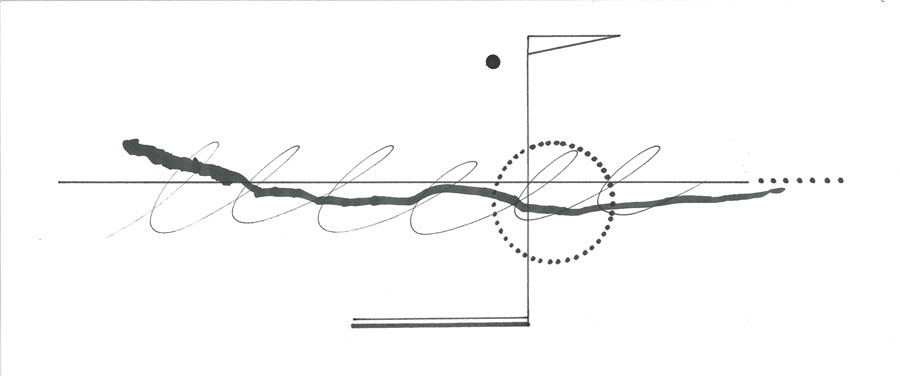 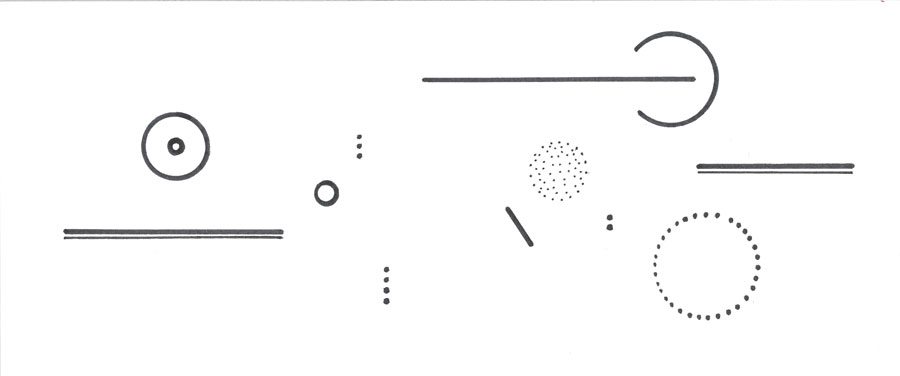 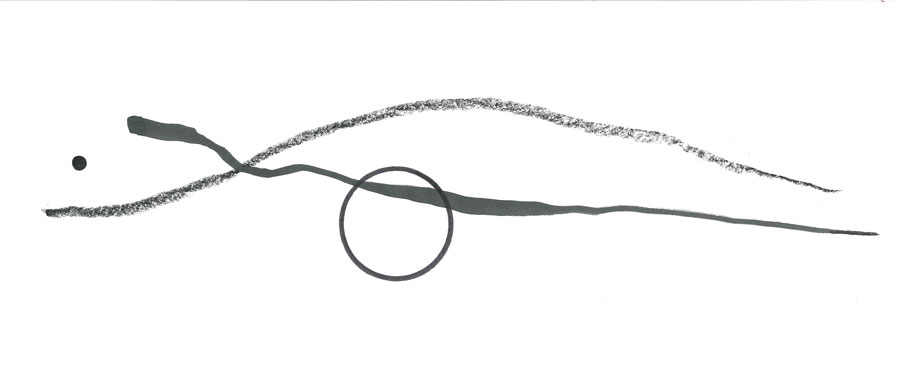 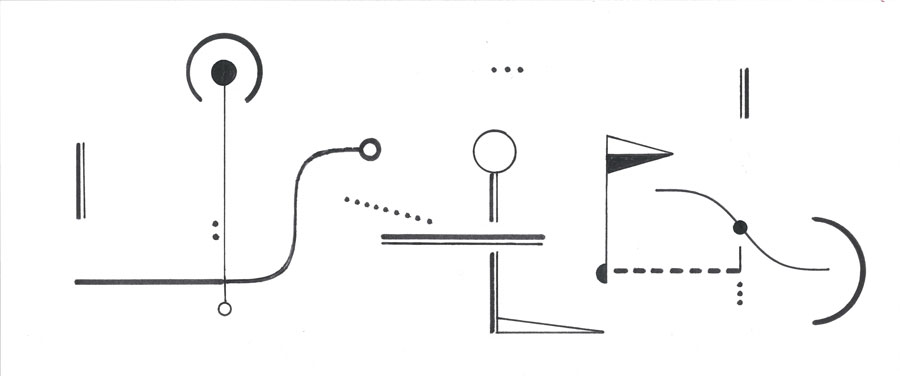 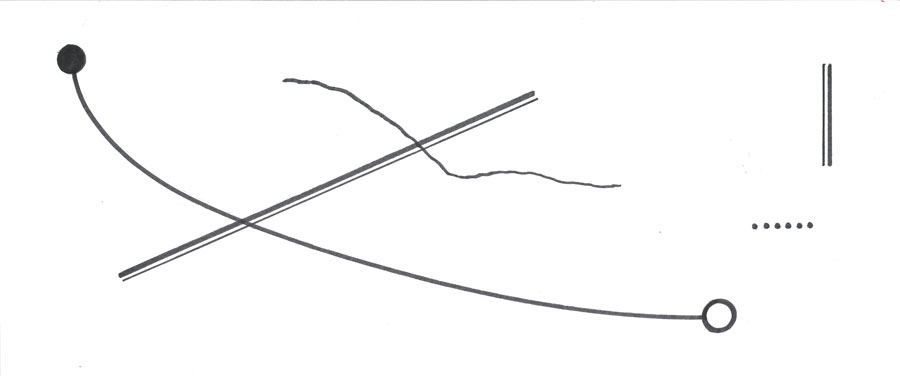 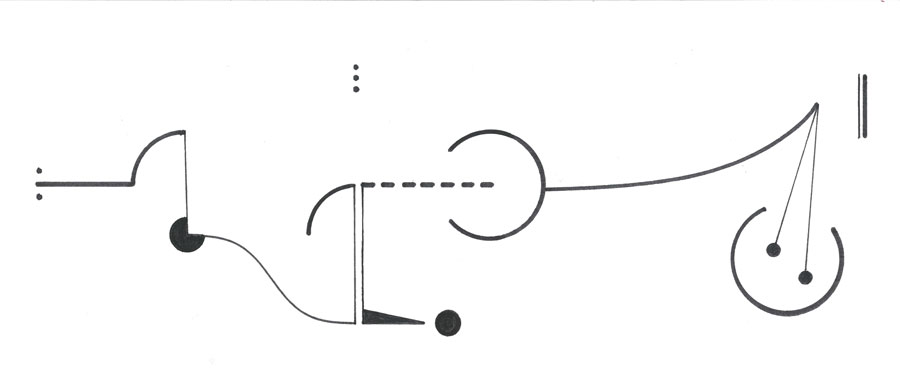 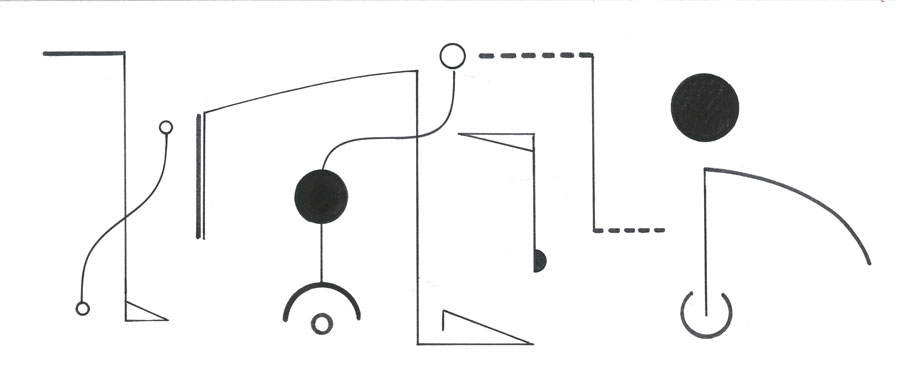 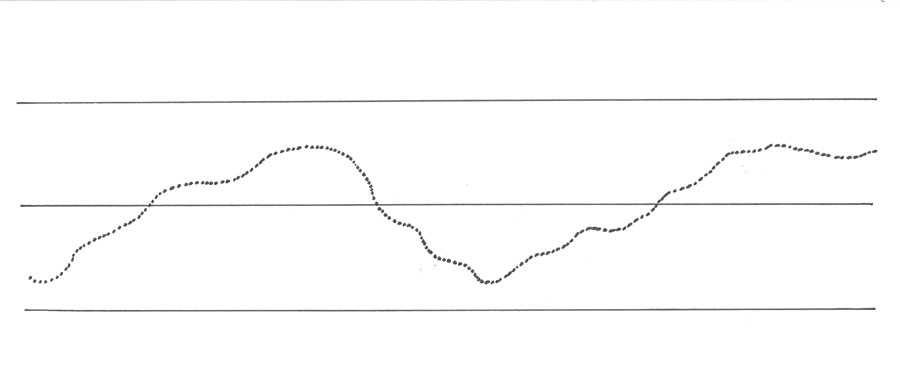 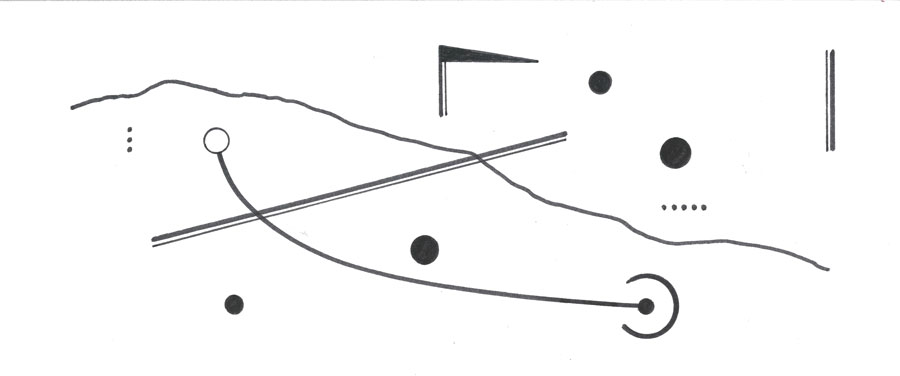 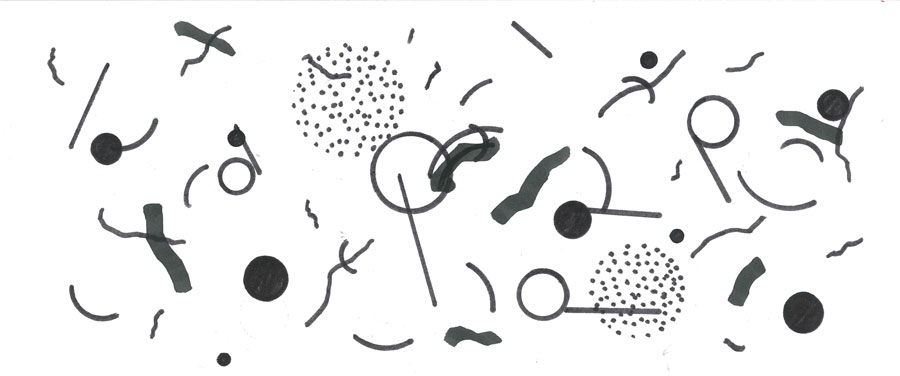 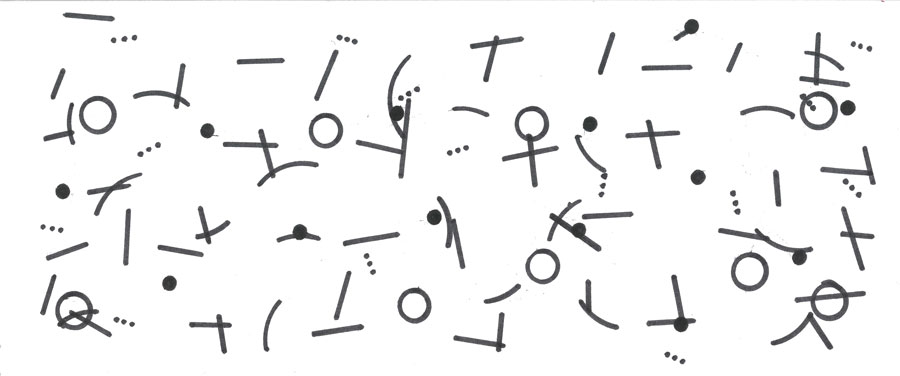 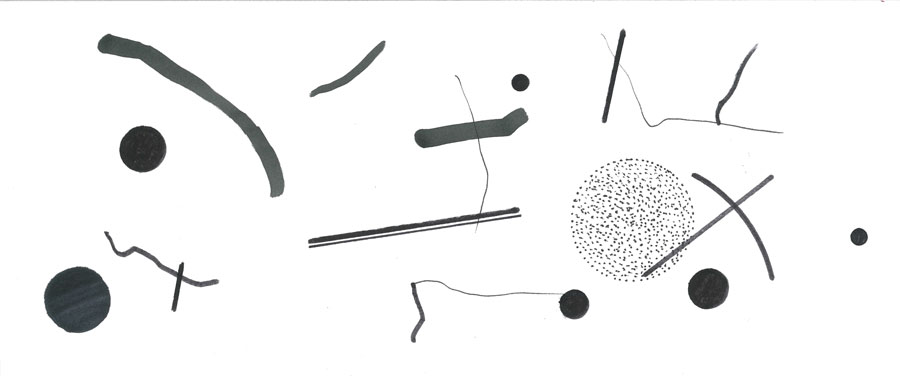 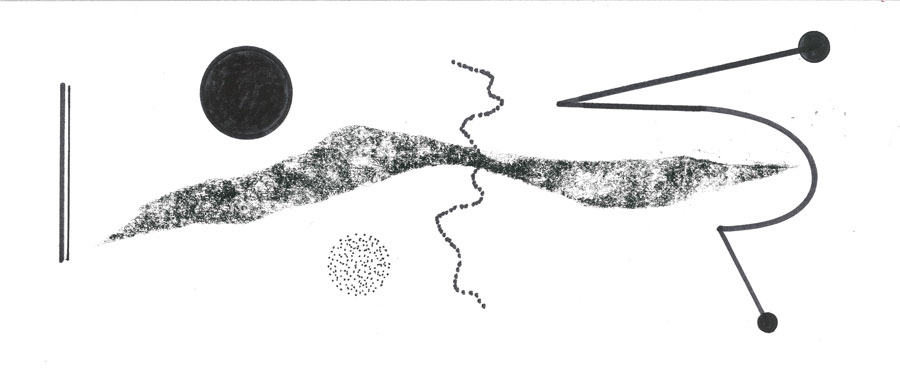  |